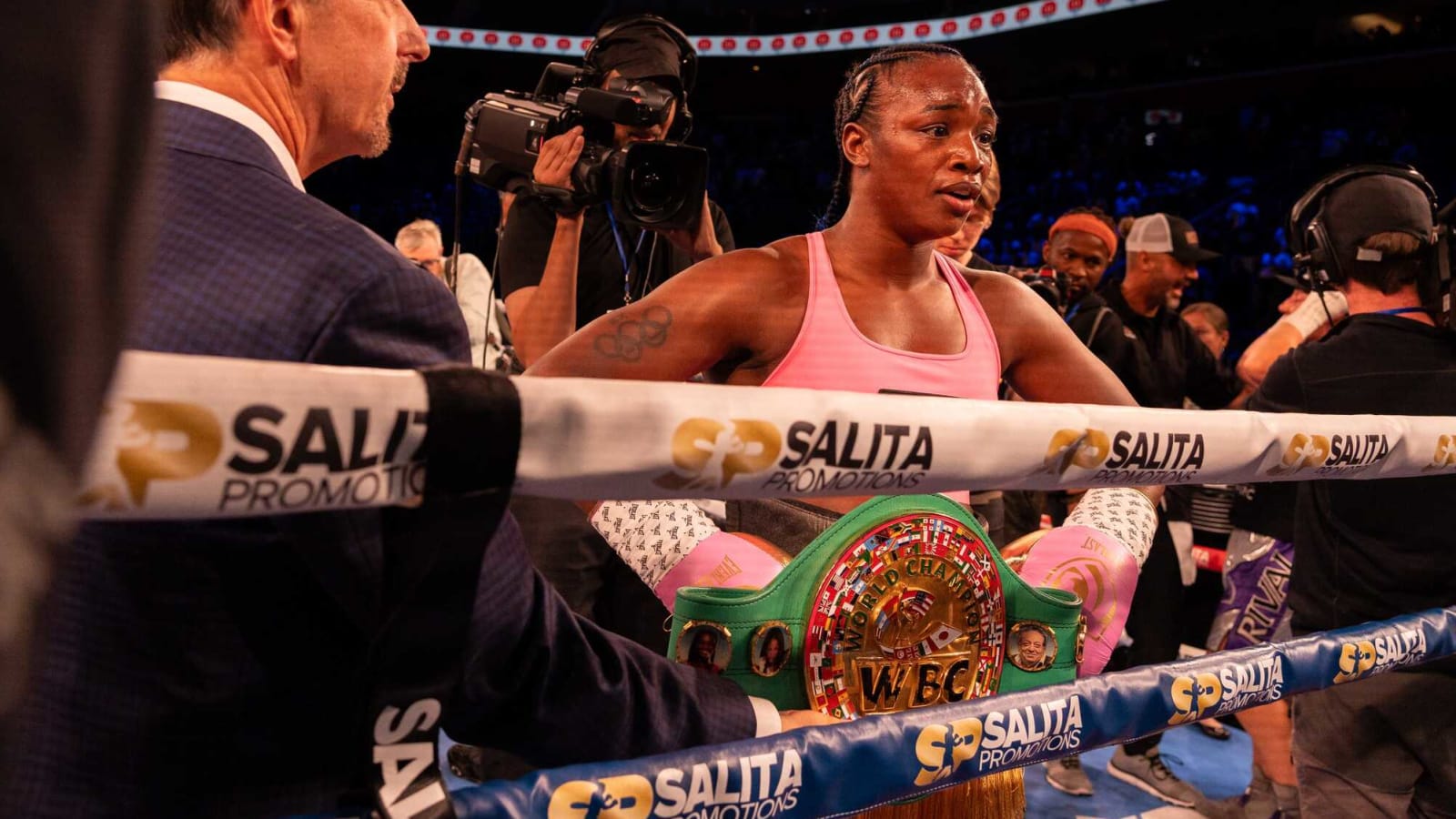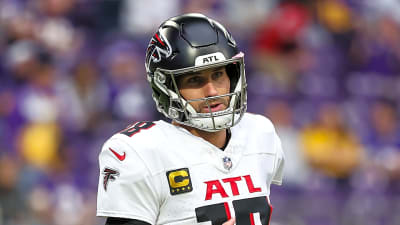
Claressa Shields is one of the most polarizing figures in boxing–female or otherwise. Despite being the first American boxer to win consecutive gold medals at the Olympics (2012/London, and 2016/Rio) and boasting an unblemished professional record of 15-0 with championship belts won over five different weight classes, Shields’ self-proclaimed GOATness is a little like when Michael Jackson declared himself the “King of Pop.” It’s not that people didn’t think Jackson had a good argument; it was the self-proclamation that people took issue with. When an athlete/musician/actor is given such a title, it’s usually by the public, not themselves.
To the film’s credit, The Fire Inside does not go out of its way to make Shields (well-played by Ryan Destiny) likable. Instead, the film makes no small effort to explain why that chip on her shoulder isn’t a chip; it’s that “boulder on my shoulder” that Bruce Springsteen sang about over fifty years ago. That boulder was built in Flint, Michigan, a city of just over 80,000, with more than 55% of its population being black. If Flint is known as anything other than the city sixty-six miles northwest of Detroit, it’s for the city’s lead contamination in its water that reached a full-blown crisis from 2014-2019.
There’s a scene early on in The Fire Inside where Shields’ mother serves cereal for breakfast, realizes she’s out of milk, and uses water instead. Even though the early portion of the film takes place before the lead poisoning of Flint’s water supply, it’s hard not to think of Flint as one of the American examples of the hard-knock life. Like Detroit, Flint rises and falls with the success of one industry: automobiles. Top that off with the white flight from the cities to the suburbs, and Flint is undoubtedly one of the toughest cities to grow up in as a child in the United States of America. The economy is unstable, the state government is often dismissive of the city’s plight, and the water isn’t fit to drink.
Who could blame Shields for being challenging, easy to anger, a pain in the as$? The Fire Inside is written by the great filmmaker Barry Jenkins, who wrote and directed the Oscar-winning Moonlight, If Beale Street Could Talk, and the seven-time Emmy-nominated The Underground Railroad. The film’s director, making her feature-length debut in that capacity, is the Oscar-nominated cinematographer of Mudbound. The Fire Inside does not lack behind-the-camera pedigree. While Destiny is terrific in playing the uncompromising Shields, the film is primarily a two-person show, with the great Brian Tyree Henry as Shields’ first boxing coach, Jason Crutchfield; as good as Destiny is, Tyree Henry steals most of the show as a cable man by day who sacrifices mightily to be Shields’ coach at night and on the weekends. Henry has been an actor on the upswing for years now (as his Oscar nomination for supporting actor in 2022’s Causeway, along with his two Emmy nominations–one for This is Us and the other for Atlanta will attest).
When a pre-teen Shields walks into Crutchfield’s gym, he’s dubious about putting a girl in a boxing ring. That is until she wears out a boy her age in a sparring session. Shield’s nickname to this day is “T-Rex” due to her short arms. Typically, a lack of reach is a great detriment inside the ring, but Shields’ high skill level and relentless inside game helped her overcome her biology. Before long, Shields was rising up the ladder in women’s boxing, making her a genuine groundbreaker in the sport. While predecessors like Christy Martin and Laila Ali (daughter of Muhammad) reached a certain level of fame in boxing, the women’s side of the sport was still considered a novelty. The lack of a proper amateur program hampered the development of women’s boxing for years, but that began to change with the sport becoming certified as an Olympic event in 2012. Shields was just seventeen when she won her first gold medal that year and only twenty-one when she repeated her feat in 2016. Even so, the sport had a long way to go regarding pay and endorsements.
One of the critical frustrations between Shields and Crutchfield is her trainer’s assumption that winning Olympic gold would result in a hefty payday. But as one agent tells Crutchfield, as much as he is impressed by Shields in the ring, people just don’t want to watch women beat each other up, and therefore, he sees no financial opportunity in taking her on as a client. Looking at the sport today, when a fight between Katie Taylor and Amanda Serrano can pack the house at MSG as the headliner, one can see that women’s boxing has come a long way in a short time.
The trouble for Shields has often been her tough-as-nails personality and over-sensitivity to criticism. Again, the seeds of her defensiveness were sewn in Flint. A place where her father was often absent, where a friend of her mother’s took advantage of her, and where many people (including family) only took an interest in her once she started breaking down barriers. The film begins with an overhead shot of Flint during what looks like the first cold snap of winter, and it’s a grim sight, indeed. Across these yards and streets, we see a young girl running with a hoody around the potholes and over the frozen ground. She isn’t a boxer yet, but she sure looks like one as she puts in the necessary steps to become a world-class athlete. The film focuses on Shields’ boxing origin and ascension to Olympic glory, leaving her exceedingly successful pro career to postscript.
It’s a smart move by Jenkins and Morrison. Shields’ rise as a hard-nosed girl who fights for equity, family, and a future in the sport is more compelling than her esteemed career as a professional. Of her fifteen professional wins, only three have come by knockout. The expectations for Shields as a pro boxer were unrealistic. Still, her lack of flamboyant finishes has hurt her reputation in the sport, even as her skill has allowed her to dominate in five different weight classes. At this point, the younger Shields is just a better story. Dominance is boring; the underdog is where the drama is.
The Fire Inside is the story of that underdog, that trailblazer, that future champion, who rose up from the grit and grime of one of the roughest cities in the United States to become a world champion as an amateur and a professional. Shields is one of a kind, even if her kind isn’t all that popular with the press. Rachel Morrison’s film illuminates and humanizes one of the most challenging personalities in all sports by showing why she is seen as “difficult” and lacking charm. She probably wouldn’t have become a champion if she had been any other way. She may not have even survived her surroundings. Shields’ name will go down as one of the most important in the history of women’s boxing (if you don’t believe me, just ask her), but the bravado, however unenjoyable some might find it to be, has been earned.
More must-reads:
- Nationals need manager change after Dave Martinez's comments
- Thunder's Alex Caruso has been X factor of NBA Finals
- The 'Golfers with multiple U.S. Open titles' quiz
Breaking News
Trending News
Customize Your Newsletter
 +
+
Get the latest news and rumors, customized to your favorite sports and teams. Emailed daily. Always free!







